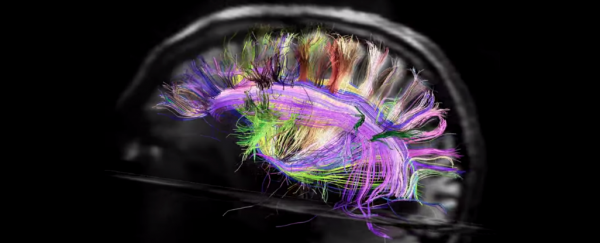In people with autism spectrum disorder ( ASD), no two brains are alike when it comes to connectivity between regions, scientists have found, which is in stark contrast to the relatively uniform way the brains of people without autism are arranged.
This discovery was made by a team from the Weizmann Institute of Science in Israel, and could explain why some studies have found evidence that people affected by autism have overly connected brains, while others have characterised ASD as the result of reduced connections in several regions, both inside and outside of the cortex. The results of this new study could bring both findings together and uncover a new principal at play in the minds of those with ASD.
The team looked at five large data sets of functional magnetic resonance imaging (fMRI) scans taken of high-functioning adults with ASD and controls that were not affected by the disorder. The scans were taken at various universities around the US, and while each individual was at rest. "Resting-state brain studies are important, because that is when patterns emerge spontaneously, allowing us to see how various brain areas naturally connect and synchronise their activity," said one of the team, Avital Hahamy, in a press release.
When they compared the brains of the controls - so, scans from people without autism - they found a standardised pattern of functional connectivity across each of them. If you superimposed one on top of the other over and over, the levels of connectivity across the various regions of the brain would look basically the same.
"Certain regions had high inter-hemispheric (between the right and left sides) connectivity: primary sensory-motor regions like the sensorimotor cortex and the occipital cortex," writes Diana Gitig at Ars Technica. "Others showed low inter-hemispheric connectivity: regions like the frontal cortex and temporal cortex, which are involved in higher order association. Overall, the control brain scans looked pretty much the same as each other."
But when they compared the brains of people with ASD, they couldn't find any similarities between them in terms of where functional connectivity would be typically high, and where connectivity would be low. In fact, they say it's not even really about the weakness and strength of the connections, but rather the topology of the neural networks - so, how they're arranged.
The team suggests that the fact that no two ASD brains they studied were the same could be a core characteristic of high-functioning ASD. They couldn't even split the brains up into sub-groups because the way the networks were arranged was so idiosyncratic and individualised, but note that an analysis of far larger data sets could eventually uncover clustering of similar characteristics and connectivity patterns.
"Our results reveal a new and robust abnormality in the ASD connectivity, which relates to the topographical nature of the functional connectivity patterns rather than to their overall strength," the team reports in the journal Nature Neuroscience. "Specifically, we found that the canonical pattern of functional connectivity seen in typical controls showed significant and individually distinct (idiosyncratic) distortions in participants with ASD."
The team isn't sure what causes the brain connectivity in people with ASD to, essentially, go off and do its own thing, and because they only studied the brains of adults, they're not sure when this idiosyncratic distortion is likely to occur. But they suggest that it could be the result of how people interact and communicate with their environments on an everyday basis.
"From a young age, the average, typical person's brain networks get moulded by intensive interaction with people and the mutual environmental factors," says Hahamy in the press release. "Such shared experiences could tend to make the synchronisation patterns in the control group's resting brains more similar to each other. It is possible that in ASD, as interactions with the environment are disrupted, each one develops a more uniquely individualistic brain organisation pattern."
Sure, it'd probably be far easier to understand how this disorder develops if we were able to form a standardised 'template' of what the brain of a high-functioning adult with ASD should look like, instead of what we actually have, which is a bunch of highly individualised patterns, but it's incredibly valuable to finally get a sense of why conflicting studies on connectivity exist. It offers something entirely new to investigate as scientists try to figure out where it comes from, and what those living with it are experiencing.
Source: Ars Technica
